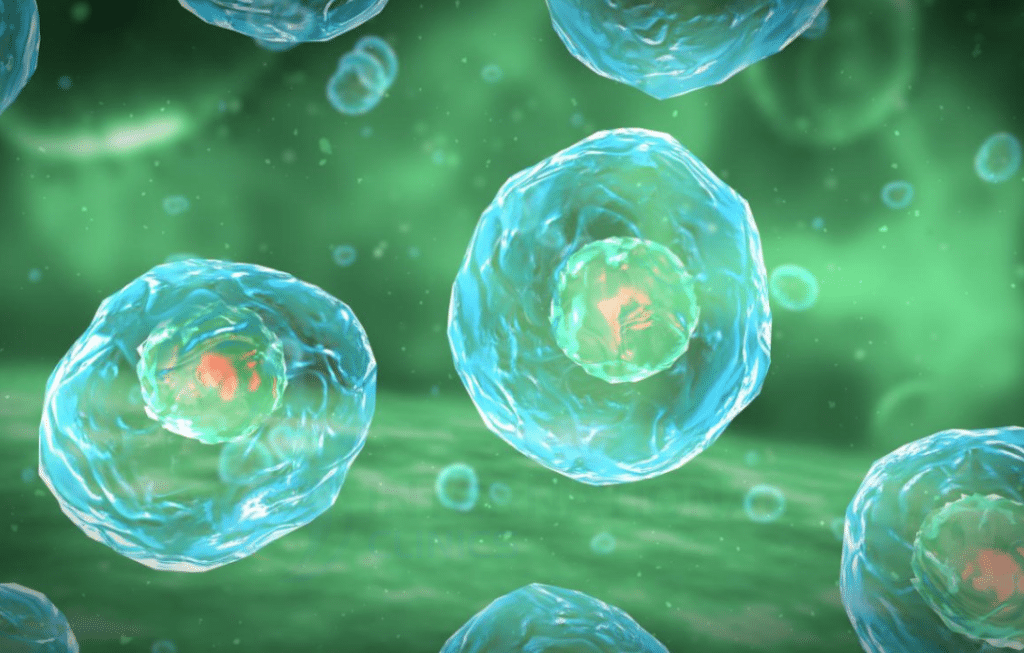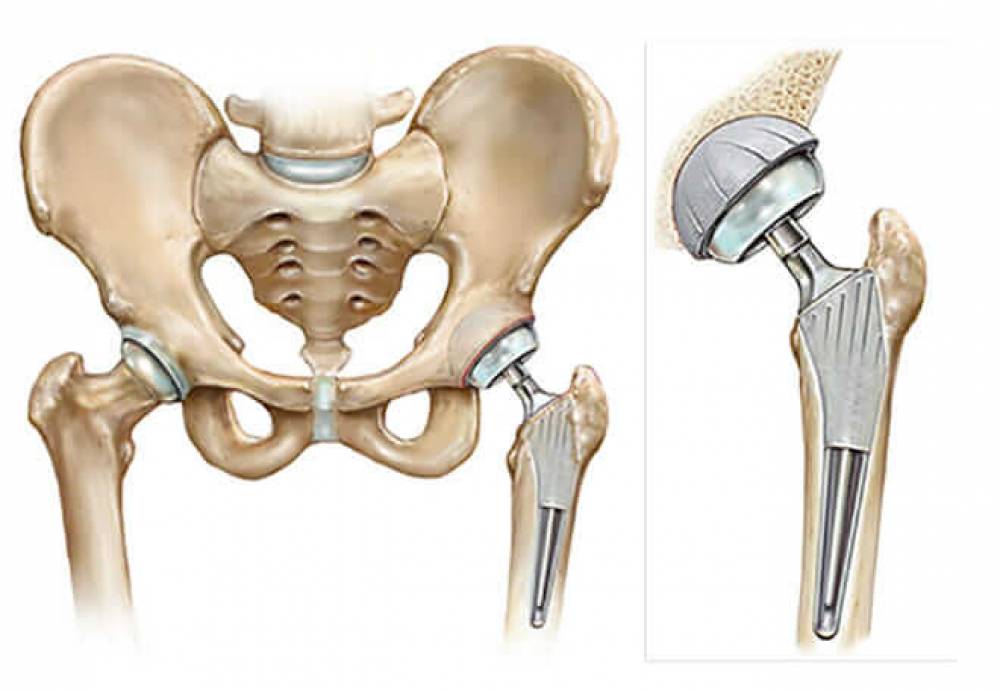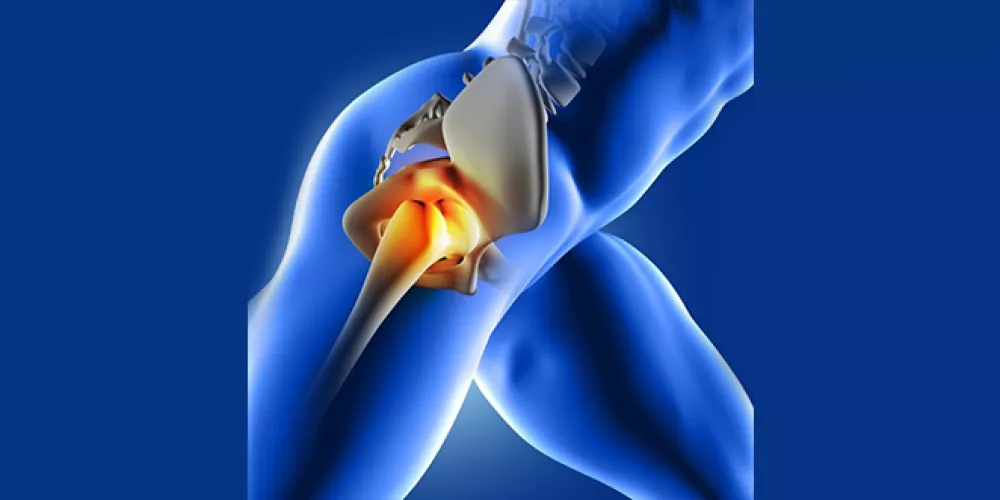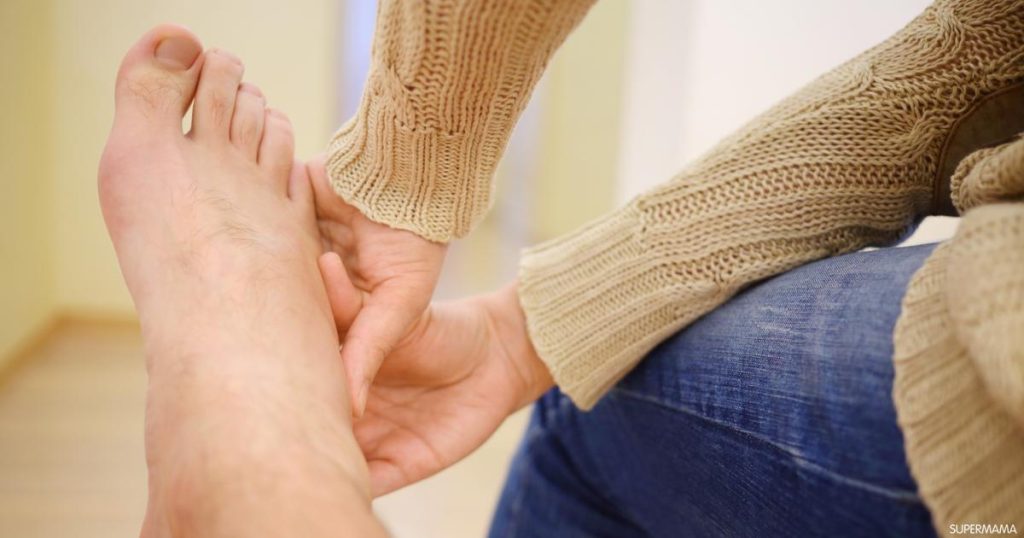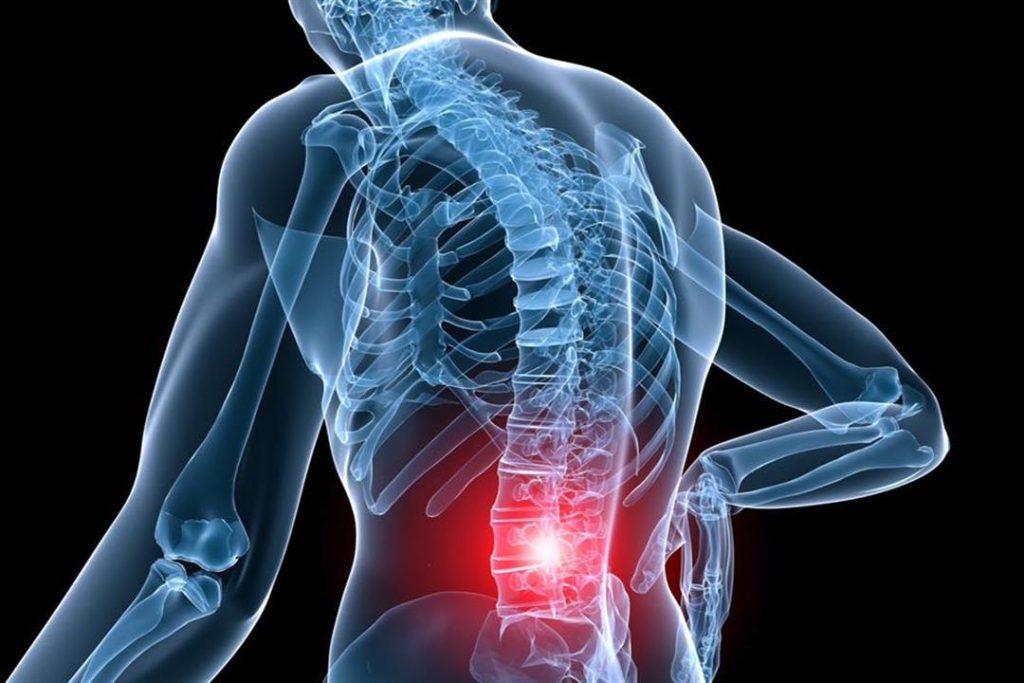Learn more about sciatica and how to get rid of it?
أخر تحديث :
Sciatica Pain
Sciatica pain is a common condition that affects many people around the world. This pain results from the compression of the nerve root in the spine, causing numbness and sharp pain in the lower back area. The causes of sciatica can be varied, including herniated discs, bone spurs, and arthritis. Although there are both surgical and non-surgical treatments available, minor pain usually disappears over time.
For individuals under the age of 40, a herniated disc is a primary cause of sciatica. This occurs when the cartilage of a compressive disc moves out of place and impinges on the connected nerve root. Additionally, bone spurs and arthritis are common causes of sciatica in older adults.
Unfortunately, sciatica cannot always be avoided permanently. However, some precautions can be taken to maintain back health and reduce the risk of developing sciatica. These precautions may include:
- Avoiding heavy lifting: One should avoid carrying items that put extra pressure on your back. If you must lift something heavy, make sure to bend at the knees and keep your back straight during the movement. You may also need to ask for help if the items are too heavy.
- Engaging in appropriate exercise: General physical exercises and specific back rehabilitation exercises can help strengthen the back muscles and improve flexibility. These exercises include swimming, lifting weights correctly, and practicing yoga or Pilates.
- Maintaining good posture: It is important to keep your back straight while sitting, walking, and engaging in any other activity. Using a back-supportive chair or a comfortable cushion for sitting may be helpful.
- Home treatment: Pain can be alleviated by taking certain measures at home. Hot or cold packs can be applied to the area of pain to relieve symptoms. Simple analgesics containing anti-inflammatory components can also be used to provide temporary pain relief.
- Physical therapy: Physical therapy can help alleviate pain and promote healing. This may include muscle strengthening exercises, balance and stability exercises, as well as professional massage sessions.
- Medical treatment: In cases of chronic or severe pain, a doctor may recommend taking certain non-steroidal anti-inflammatory drugs or opioid analgesics to alleviate pain.
When a person experiences severe or recurring symptoms of sciatica, it is advisable to visit their doctor to assess their condition and consult about the best treatment plan. The doctor may direct the patient to undergo a painful injection or surgery if necessary. Ultimately, treatment aims to improve the patient’s quality of life and relieve the chronic pain associated with sciatica.
How do I get rid of sciatica pain?
Sciatica pain is considered a common ailment that affects many people around the world. This pain results from inflammation of the sciatic nerve, a disorder that affects the nerve extending from the lower back to the leg and foot. This inflammation can cause sharp and severe pain in the lower back and leg. If you are suffering from sciatica pain, here are some tips to alleviate the severity of the pain and overcome this condition:
- Seek medical advice: Before you start any treatment, it is preferable to consult your doctor to determine the cause of sciatica pain and provide appropriate advice.
- Rest and avoid strong movements: Avoiding situations and movements that may increase sciatica pain can help reduce pain and promote healing. It may be helpful to remain seated or lying on your back with a cushion under your knees. It is also advised to avoid lifting heavy objects or making excessive movements.
- Massage: Massage is a recognized way to relieve sciatica pain. It can promote blood flow in the affected area and reduce swelling and inflammation.
- Rehabilitation exercises: Rehabilitation exercises can play a significant role in treating sciatica pain. It is advised to consult a physical therapist to design a special rehabilitation program that includes stretching exercises and muscle strengthening, which can promote stability and strengthen the spine.
- Medication: Your doctor may prescribe some medications to relieve pain and reduce swelling and inflammation associated with sciatica pain. Among the medications used are non-steroidal anti-inflammatory drugs, muscle relaxants, pain relievers, and others.
- Physical therapy: Your doctor may recommend undergoing physical therapy as a means to relieve sciatica pain. This may include the use of heat or local cooling, massage techniques, and ultraviolet light therapy sessions.
If sciatica pain persists for a long time and negatively affects the quality of your life, you should consult a spine specialist for a more detailed assessment and appropriate treatment. Do not forget that adherence to medical guidance and following a healthy lifestyle can help get rid of sciatica pain and promote healing.
How long does sciatica pain last?
Sciatica is a painful health condition that many people around the world suffer from. This type of pain is called “sciatica” after the nerve root involved in this condition. The main symptoms of sciatica are numbness and tingling that intensifies in the leg and foot, often accompanied by sharp pain that spreads from the back to the leg.
The duration of sciatica pain varies from case to case. In some cases, the pain disappears spontaneously within a short period, while others suffer from more persistent and intense pain. However, generally, doctors indicate that improvement in sciatica symptoms is natural and expected within a few weeks or months.
The severe pain of sciatica may persist throughout the early treatment period, which may extend for a few weeks, but generally, acute episodes disappear within a period ranging from one week to two weeks. When the patient is healed, they may not feel sciatica pain for a period ranging from one month to several months.
The duration of pain in sciatica cases varies, with some benefiting from available therapeutic procedures and experiencing rapid improvement in their symptoms, while others feel pain for a longer period and may even need additional medical advice. If the pain persists for more than several weeks and worsens, those affected are advised to seek medical help.
In an effort to alleviate sciatica pain and accelerate the healing process, it is recommended to avoid any activity that causes irritation to the pain. It is important to avoid sitting or standing for long periods, as well as avoiding sitting for long periods without movement. Additionally, sneezing, coughing, and sitting for a long time can increase the severity of the pain.
Although the cause of sciatica is due to the compression of nerve roots in the spine, it usually occurs because of the herniated disc moving out of its usual place. Furthermore, sciatica is particularly diagnosed in individuals under the age of 40, while older adults typically suffer from other factors such as bone spurs and arthritis.
It can be said that sciatica pain varies from one person to another in terms of duration and intensity. Although it may take some time to fully heal, gradual improvement is a natural feature of this condition. If the pain persists and continuously worsens, it is necessary to consult a doctor for appropriate advice and treatment.
Does sciatica heal on its own?
Sciatica is a common condition that affects many people at a certain stage of their life. It occurs when the nerve roots that make up the sciatic nerve are compressed, causing pain and numbness in the back, thighs, buttocks, and lower legs. Although sciatica can be very painful, in many cases it can heal on its own without the need for lengthy treatments or surgery.
Mostly, the pain gradually subsides over time with sufficient rest for the body. Acute sciatica usually lasts between one to two weeks, and with the patient’s commitment to rest and not lifting heavy objects, the pain can gradually disappear on its own within a few weeks.
After the pain has eased, the individual may feel some numbness for a short period, and the pain may recur several times a year. If the pain persists for a long period of more than 12 weeks, sciatica may be considered chronic. In this case, there may be a need for ongoing medical treatment to alleviate and manage the pain.
Although sciatica can be painful and may take some time to recover from, there are some natural measures that can be taken to relieve the pain and speed up the recovery process:
- Rest: Once the pain starts, the patient should give their body a sufficient rest period. It is important to avoid strenuous physical activities and lifting heavy objects. If the pain is severe, it may be best to consult a doctor and follow their instructions.
- Ice or heat application: Ice or hot applications can be used to relieve pain and reduce swelling. This method is recommended for 15-20 minutes several times a day under medical supervision.
- Exercise: After symptoms improve and pain relief, individuals with sciatica can perform some exercises focusing on strengthening the muscles of the back, buttocks, and thighs. It is advisable to consult a medical rehabilitation specialist to develop an appropriate exercise program for the patient’s condition.
- Physical therapy: The doctor may recommend physical therapy to strengthen the back muscles and improve flexibility, which leads to reduced tension on the nerve roots and improved symptoms.
Although sciatica can be painful and troublesome, in most cases it heals on its own. With the implementation of self-rest procedures and natural treatments, the pain can recede and heal gradually. If the pain persists for a long time or the symptoms worsen, it is necessary to consult a doctor for proper diagnosis and treatment.
How do I know if I am suffering from sciatica?
Sciatica is a painful condition that affects movement and the quality of life of those affected by it. It can be somewhat difficult to recognize the presence of this condition, as its symptoms can be similar to other diseases. Therefore, the patient must be aware of the distinctive signs and symptoms of sciatica. In this article, we will look at the most important indicators that may suggest the presence of sciatica.
- Persistent pain: Continuous pain in the affected joint is one of the most prominent signs that indicate the presence of sciatica. This pain can be sharp and persistent or may worsen with sudden movements.
- Redness and swelling of the joint: Sciatica can cause redness and swelling of the affected joint. The joint may be hotter than the rest of the body’s joints.
- Difficulty in movement: Sciatica may be accompanied by difficulty in moving and the ability to use the affected joint normally. The patient may feel restricted even in the simplest movements.
- Skin color changes: In some cases, the patient may notice a change in the skin color over the affected joint. The skin color can be pale red or dark.
- Skin sensitivity: The patient with sciatica may notice some skin sensitivity over the affected joint. They may have a sensation of itching or tension or pain when touching the affected area.
- Difference in skin temperature: The skin temperature over the affected joint can be hotter or colder than the rest of the body. This difference in temperature may indicate the presence of sciatica.
- Appearance of swellings in the affected area: The affected area may begin to show swellings of varying sizes. These swellings can be faintly visible at times but may become more obvious over time.
- Disruption in sleep pattern: A patient with sciatica may suffer from a disturbance in their sleep pattern due to constant pain and discomfort. They may find it difficult to sleep for long periods and may suffer from frequent waking during the night.
- Impact on psychological state: Sciatica can have a psychological effect on the patient. They may feel depressed or anxious due to the constant pain and the challenges they face in performing their daily activities.
- Non-response to traditional treatments: If the patient notices a lack of response to traditional treatments such as painkillers and physical therapy, this may be an additional indicator of sciatica.
It is important for sciatica to be diagnosed by a specialist doctor, who will inquire about the patient’s medical history and conduct the necessary examinations to determine the correct diagnosis. The importance of early diagnosis and the initiation of appropriate treatment to alleviate pain and improve the quality of life of patients with sciatica should not be underestimated.
How does a patient with sciatica sleep?
Sciatica is a condition that causes acute pain in the hips, thighs, legs, and buttocks as a result of compression of the sciatic nerve. The pain can be very distressing and affects the daily quality of life of individuals with this condition. Sciatica also affects the ability to sleep well, as most patients struggle to get a peaceful and restful night’s sleep. However, there are some tips that can be followed to improve sleep for patients with sciatica.
Step One: Identify the Cause of Your Sciatica Pain Before taking any steps to improve sleep, you should determine the cause of your sciatica pain. The cause can be multifactorial, including disc herniation and spinal stenosis. This may require a visit to the doctor and consultation with a physical therapist to obtain the correct diagnosis and appropriate treatment plan.
Optimal Sleeping Position
After determining the cause of your sciatica pain, you can take steps to avoid its discomfort and improve the quality of your sleep. Choosing the right sleeping position is very important. For each condition, there may be a suitable sleeping position:
- If you have a disc herniation: A person with this condition may find that sleeping on their back is best for them, as it reduces the gravitational pressure on the damaged disc and relieves nerve pain.
- If you have spinal stenosis: Sleeping on the side is preferable, as this allows for more space between the vertebrae, which reduces pressure on the sciatic nerve.
- Use supportive pillows: Using a supportive pillow under the head, neck, and back can help distribute pressure more evenly and reduce pain while sleeping.
- Avoid uncomfortable positions: Sleeping on the stomach should be avoided as it can lead to tension in certain parts of the back and the sciatic nerve.
Tips for Improving Sleep with Sciatica
- Follow a healthy diet: Avoid eating fatty and fried foods, and increase the consumption of foods containing antioxidants, such as fruits and vegetables.
- Regular physical exercise: Practicing light sports activities, like walking and swimming, can help strengthen muscles and alleviate pain associated with sciatica.
- Relax before bed: Before going to bed, applying relaxation techniques such as yoga or meditation can allow the body and mind to relax and prepare for sleep.
- Avoid sitting for long periods: It is important to avoid staying in a seated position for extended periods, as this can exacerbate sciatica pain.
Do Not Forget to Consult Your Doctor It’s very important that you share these tips with your doctor or physical therapist before trying them out. There may be some recommendations specific to your particular condition, and it might require a comprehensive individual treatment. You should also be patient, as some of these measures may take some time to show noticeable improvement.
What is the difference between sciatica and false sciatica?
Sciatica is a neuromuscular disorder affecting the sciatic nerve, which extends along the back, hip, buttocks, and leg. Sciatica is characterized by usually affecting only one side of the body and occurs due to narrowing in the spinal column or compression on the sciatic nerve.
On the other hand, false sciatica differs from true sciatica in that it is a non-authentic pain and is not due to a disorder in the sciatic nerve. It can be caused by irritation of the sciatic nerve muscles in the hip and buttocks area. Although it is not a serious condition, it can cause annoying pain and spasms in these areas.
To distinguish between sciatica and false sciatica, some signs and symptoms can be considered. For example, the pain of true sciatica extends along the sciatic nerve from the lower back down to the legs, while the pain of false sciatica is often concentrated in the hip and buttock area without extending below the knee.
The causes of true sciatica and false sciatica are different. True sciatica occurs due to pressure on the sciatic nerve caused by narrowing in the spinal column or direct injury to this part of the body. Among the known causes of true sciatica are degenerative bone disorders, joint inflammations, and back fractures.
False sciatica, however, results from muscle spasms in the sciatic nerve. Although it is not a serious condition, it causes painful and uncomfortable pain in the hip and buttock areas.
The treatment for sciatica depends on the type and severity of the case. In the case of true sciatica, treatment may be directed at reducing nerve irritation and relieving pain and increasing muscle flexibility in the affected area. This may include physical therapy and supportive treatments such as heat therapy and rehabilitative exercises. Interventional treatment through injections near the sciatic nerve may be the last option in some cases.
In the case of false sciatica, the focus is on relieving muscle spasms and easing the pain. Some available treatment options include muscle massage, muscle stretching exercises, deep breathing techniques, and neural relaxation.
Before starting any treatment, it is essential to consult a specialist doctor to diagnose the condition accurately and determine the actual cause of the symptoms. Pain in the hip, buttock, and leg area should not be neglected, and a doctor should be consulted if symptoms persist or worsen.
People who experience pain in the hip, buttock, and leg area should be aware that there is a difference between sciatica and false sciatica. By understanding the nature of the pain and accompanying symptoms, they can accurately identify the condition and obtain appropriate treatment to alleviate symptoms and improve the quality of life.


